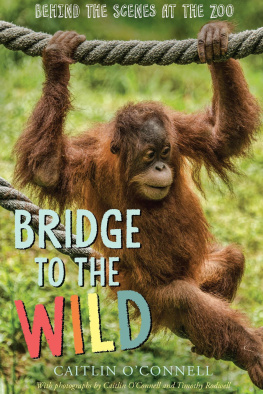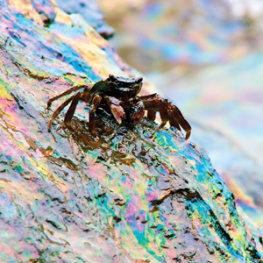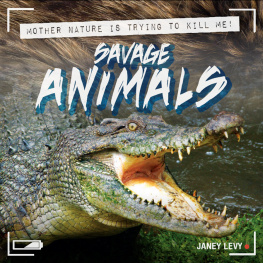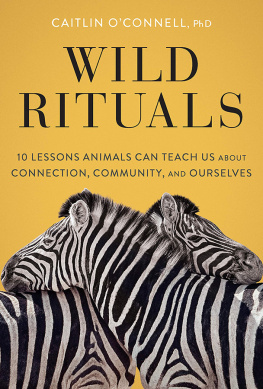FOR ANIMAL CAREGIVERS
This book is dedicated to all of the animal lovers and caregivers who spend their lives making sure that wild, domestic, and captive animals are treated with compassion.
Text copyright 2016 by Caitlin OConnell
Photographs copyright 2016 by Caitlin OConnell and Timothy Rodwell
All rights reserved. For information about permission to reproduce selections from this book, write to or to Permissions, Houghton Mifflin Harcourt Publishing Company, 3 Park Avenue, 19th Floor, New York, New York 10016.
www.hmhco.com
Zoo map, turtle skeleton, and flamingo illustrations by Migy Blanco.
The illustrations in this book were created with inks and Photoshop.
The display type was set in Cluster and Pondicherry.
The Library of Congress has cataloged the print edition as follows:
Names: OConnell, Caitlin, 1965 author, illustrator. | Rodwell, T. C., illustrator.
Title: Bridge to the wild : a day in the life of zoo curators / written by Caitlin OConnell ; with photographs by Caitlin OConnell & Timothy Rodwell.
Description: Boston : Houghton Mifflin Harcourt, [2016] | Audience: Ages 912. | Audience: Grades 4 to 6.
Identifiers: LCCN 2015024535 | ISBN 9780544277397
Subjects: LCSH: OConnell, Caitlin, 1965Juvenile literature. | Atlanta ZooJuvenile literature. | Zoo keepersJuvenile literature. | ZoosJuvenile literature. | Human-animal relationshipsJuvenile literature. | Zoo animalsJuvenile literature. | Animal behaviorJuvenile literature.
Classification: LCC QL51 .O25 2016 | DDC 636.088/9/092dc23 LC record available at http://lccn.loc.gov/2015024535
eISBN 978-0-544-82935-0
v1.0716
Bridge to the Wild: An Introduction
In the heart of many cities, there is a jungle. And as the sounds of the city subside in the evening, the noise of the wild rises above the din. You can hear the chatter of monkeys and chorus of birds, and if youre lucky you might also hear a lion belt out a territorial roar to announce the arrival of evening.
Growing up in New Jersey, I loved going to the Bronx Zoo with my parents and staying until closing time, which meant waiting until the lion had roared. And my strongest memories of the zoo were of my visits to the male gorilla when I was about seven years old.
I remember the gigantic gorilla sitting in a tiny cell, barely larger than he was. Whenever I went to visit him, he seemed to have a headache. His enormous hand covered his face with giant black, leathery digits spread out, allowing me to see his distant eyes staring at nothing. It seemed as if the walls were closing in on him with every breath he took.
I knew gorillas didnt like to be looked in the eye, since they saw it as a threat, but it was hard for me not to smile at him with my eyes. Admittedly, one time I tried to get him to look at me by moving my head up, down, and around outside the bars in front of him to get his attention, but he saw right through me, looking just over my shoulder. His vacant expression made me feel extremely claustrophobic and sad. What I really wanted to do was to crawl into his cage and hold his giant hand and tell him that everything was going to be okay.
During the last visit that I can remember, he quietly landed his gaze on me for a quick instant and Ive been haunted by that moment ever since.
To this day, when I go to any zoo, I like to walk straight to the gorillas to seek the calm of the silverback. I want his subdued family circle and his quiet gaze to tell me that everything is going to be okay in my world. And these days, exhibits for great apes have improved dramatically, with lots of space, vegetation, and water features.
I dont have any specific expectations during these encounters. I simply want the silverbacks manner to rub off on mein the same way that people turn to a yogi or gurus and seek inner peace from being in their company. It may seem strange to yearn for wisdom from gorillas, but they somehow ground me, combining a childhood memory of wanting captive animals to be treated well with the urgency I feel for their safety in the wild, knowing that their well-being depended on us. The silverback wont let me forget that. His face is too similar to minehis expressions eerily human.

A male gorilla has eye contact with me.
In the moment that the gorilla looked at me, I felt as if I were imbued with his hidden power and that my gaze would have the same effect on others as the gorillas gaze had on me, and that other people would suddenly know that they were supposed to care about animals the way I did. This strategy made sense to me because in second grade, I had a speech teacher who gave me a gold star whenever I spoke up or guessed the meaning of a sentence correctly; apparently, I was soft-spoken and wasnt a very good reader. I think thats why I liked characters such as Spiderman and Snoopy. They didnt have to say anything to get their point across. So I didnt need to read to understand them. And I liked the idea of scaling walls and being the trickster. Who wouldnt want to have hidden powers?
As hopeful as I was about my hidden powersthat everyone would be able to read my gaze and hence read my mind and know that we needed to do something to save animals in the wildit didnt take me long to realize that this strategy wasnt going to work. It was far too subtle. I needed to do something much more proactive to get my point across.
The first time I realized this I was at a big town function. My father was mayor at the time and he was presiding over the opening of a lake for public swimming. This was a very exciting day for me because it meant that I had a whole new place to go frog hunting for an entire day. It didnt matter that my mom had me wear a fancy white dress with a nice blue ribbon around the waist; I was going into the muddy part of the lake to initiate my usual frog catch-and-release program, as I always did in any stretch of water I came across in New Jersey.
My previous favorites included the pond behind our house in Wyckoff, or the lily pond patch at the end of the west shore of Culver Lake, where we spent the summerbut that was a little scarier because of the stories of large snapping turtles. I also liked the streams in the woods behind the house or during hikes and the pond at the library, where tadpoles and bullfrogs were far more interesting than booksexcept for the book about the boy who filled his bathtub with polliwogs and watched them develop into frogs. I even liked the pond in front of the shoe shop where my mom would buy us school shoes every August before school started. Needless to say, I was more excited about the frogs than about the shoes.
There I was that day, knee deep and dress covered in mud, arm outstretched over the water, hand quivering in anticipation as it hovered above a very nice-looking specimen. I held my breath and snatched the slippery frog up with great glee and held it out in front of me. While admiring its bug eyes, wide mouth, and soft, pulsing throat, I realized that there was something horribly wrong.
I looked down at my captives long legs and webbed feet below my fist, which was stuffed with frog belly, to see that his left foot was dangling from a strand of tendon, his foot having been constricted over time by a string that had been tied around it. Seeing this foot dangling off its owner was so shocking that I ran to my father to show him this terrible violation of the natural order of things.













